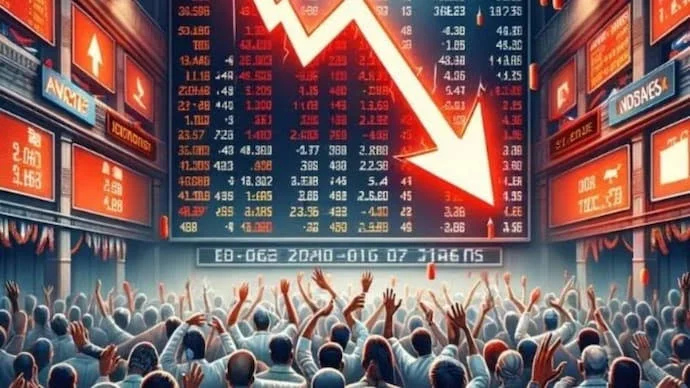Global stock markets slumped on Thursday while the U.S. dollar surged, as investors reacted nervously to rising tensions between Israel and Iran and the possibility of U.S. military involvement.
The cautious atmosphere prompted a flight to safe-haven assets such as gold and the dollar, while risk-linked assets took a hit.
The unease followed ambiguous remarks from U.S. President Donald Trump, who, when questioned outside the White House, said, “I may do it. I may not do it,” in reference to joining Israel’s strikes on Iranian nuclear sites.
According to The Wall Street Journal, Trump has already approved military plans for strikes on Iran.
However, it is reportedly waiting to see if Tehran will step back from its nuclear ambitions before issuing a final command.
European and U.S. Markets React Sharply
European equities extended their slide, with the STOXX 600 index down nearly 2.5% on the week, positioning it for its steepest weekly fall since last April’s trade war volatility.
Meanwhile, U.S. stock futures also dipped, with S&P 500 futures down 0.6%.
However, U.S. markets, including Wall Street and the Treasury market, were closed Thursday due to a public holiday.
“Market participants remain edgy and uncertain,” said Kyle Rodda, a senior analyst at Capital.com.
“Speculation that the U.S. will intervene in the Israel-Iran conflict is heightening concerns of broader regional instability.”
He added that direct American involvement could provoke Iranian retaliation, destabilize the energy market, and dampen global economic prospects.
Oil and Gold Reflect Mounting Anxiety
A key area of concern is global energy supply.
Crude oil prices have surged by 11% over the past week amid fears of supply disruptions in the Middle East.
Brent crude climbed nearly 1% on Thursday to $77.40 a barrel—its highest level since January.
Gold, typically a safe haven during geopolitical uncertainty, recovered earlier losses and traded at $3,366 per ounce, even as the dollar strengthened.
The U.S. dollar index rose across the board, pushing the euro down to $1.1466 and dragging the Australian and New Zealand dollars lower by 0.7% and 1%, respectively.
These currencies tend to weaken when markets turn risk-averse.
Fed Holds Rates, but Caution Remains
In a separate development, the U.S. Federal Reserve held interest rates steady as expected.
Despite President Trump’s call for further easing, the Fed maintained its projections for two rate cuts later this year.
However, Fed Chair Jerome Powell offered a measured outlook, warning that “meaningful” inflation could arise from Trump’s aggressive trade tariffs.
Analysts at MUFG criticized the Fed’s stance, suggesting it is underestimating pre-existing economic weaknesses, particularly in the labor market.
Outlook Remains Uncertain
With tensions in the Middle East escalating and economic signals mixed, markets are likely to remain volatile in the days ahead.
Investors will be closely watching both the geopolitical developments and the Fed’s future actions for guidance.























